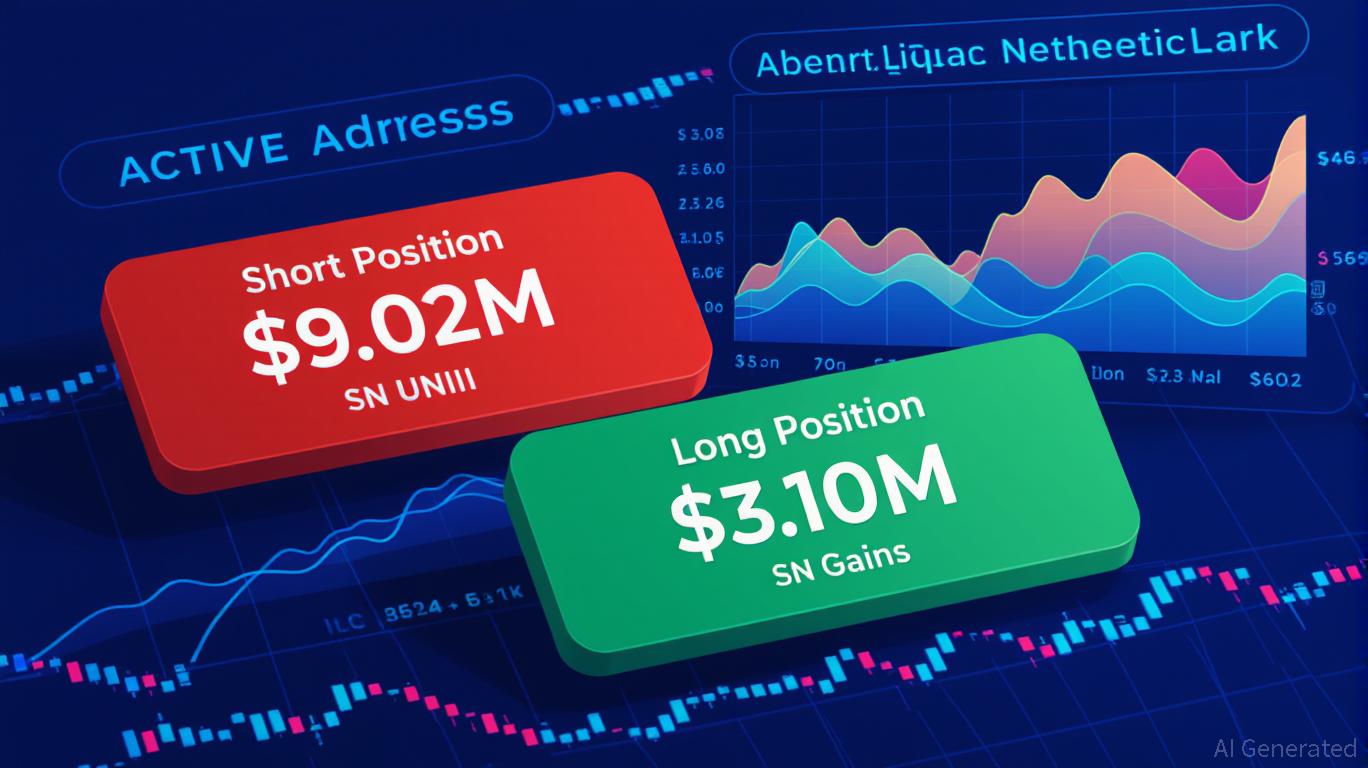What Are Crypto Whales Positioning For Amid the Rebound?
Whales reentered the market amid a 4% rebound, moving millions in top crypto assets and triggering volatility across spot and leveraged trades amid the weekend’s recovery.
After hitting multi-month lows last week, the crypto market staged a rebound over the weekend. Notably, over the past 24 hours, the total market capitalization has increased by nearly 4%.
Amid this, crypto whales remained active, moving millions of dollars in Bitcoin (BTC), Ethereum (ETH), Chainlink (LINK), and Zcash (ZEC) across both spot and derivatives markets.
Crypto Spot Market Whales Shift Major Holdings
Several notable spot market transactions unfolded as whales repositioned their assets during the rebound. An Ethereum trader who bought 6,028 ETH during the October 11 crash for $3,638 per coin exited at a modest loss.
According to on-chain data, the trader sold all 6,028 ETH for 22.26 million USDC at an average price of $3,587, realizing a $320,000 loss.
Early Bitcoin investor Owen Gunden also decreased his exposure to the largest cryptocurrency. On Saturday, OnChain Lens reported that he sent 500 BTC worth $51.68 million to Kraken.
The next day, he transferred an additional 600 BTC valued at $61.17 million to the exchange, likely preparing to sell. Despite the move, Gunden still holds 6,050 BTC, estimated at $618.78 million.
Meanwhile, Chainlink saw fresh accumulation. Two new wallets withdrew approximately $2.9 million in LINK over a three-day period. On-chain analysis showed that these wallets withdrew a total of 187,500 LINK from Binance at an average price of $15.5.
Derivatives Markets See Extreme Volatility
Leveraged trading shaped derivatives market trends, as several whales faced dramatic outcomes. Yesterday, James Wynn closed a 40x leveraged BTC short, netting a profit of $85,380. However, he later encountered losses after reopening a short position on Bitcoin.
“Due to the market rebound, James Wynn got liquidated 12 times again in the last 12 hours. His account is now down to only $6,010,” Lookonchain stated.
Another trader also faced a setback due to his BTC short. EmberCN noted that a trader transferred 7 million USDC into Hyperliquid three days ago to short Bitcoin but suffered repeated stop losses that depleted their position. The trader ended with just $560,000—a loss of about $6.44 million.
High-stakes gambling rarely ends well.The Roobet & gambler 0x7B7b has lost $6.19M in less than 4 days — his $7M bankroll is down to just $672K.His $BTC shorts have been stopped to 300 $BTC($31.75M) with a liq. price of $106,756. pic.twitter.com/iodwK9G9X2
— Lookonchain (@lookonchain) November 10, 2025
While BTC whales who bet against the market faced losses, those who shifted to the long side have been seeing gains. Lookonchain pointed out that the Anti-CZ Whale switched from short to long positions in Ethereum. The trader is sitting on more than $15 million in unrealized profit.
Meanwhile, an investor known as “Brother Machi” has steadily added to an ETH long position, now 25 times the original size, demonstrating sustained bullish conviction. Zcash also attracted significant attention from crypto whales in the derivatives market.
“The mysterious whale 0x6EF9, who went long on ZEC with limit orders, has now closed, securing a $1.25 million profit. And another new wallet (0x089f) appeared — depositing 3.54M USDC into Hyperliquid and placing a limit long at $508.5 for ZEC,” Lookonchain posted.
Overall, the latest market rebound has sparked renewed whale activity across both spot and derivatives markets. While some large investors suffered heavy liquidations, others capitalized on the volatility, signaling that confidence in assets like Ethereum and Zcash remains strong.
Disclaimer: The content of this article solely reflects the author's opinion and does not represent the platform in any capacity. This article is not intended to serve as a reference for making investment decisions.
You may also like
Hyperliquid (HYPE) Price Rally: Increased On-Chain Engagement and Institutional Interest Drive Expansion Prospects
- Hyperliquid's HYPE token surged 32% driven by whale trading and institutional adoption via HIP-3 framework. - Whale activity shows $9M UNI short vs. $3.1M long positions, highlighting platform's speculative role in volatile assets. - Institutional partnerships with RedStone and Felix, plus 21Shares' ETF application, signal growing market confidence. - TVL reached $5B with 73% decentralized trading share, but regulatory gaps and leadership changes pose sustainability risks.

The Growing Fascination with Hyperliquid: Is This the Next Evolution in Cryptocurrency Trading?
- Hyperliquid dominates decentralized trading in 2025 with $303B Q3 volume, 62% perpetual DEX open interest, and $5B TVL growth. - Ecosystem expansion includes HyperEVM (100+ protocols, $2B TVL) and USDH stablecoin (backed by BlackRock , $2.2M trading volume). - Institutional adoption grows via 21Shares' ETF application, but risks include regulatory scrutiny, 16-validator security vulnerabilities, and HYPE token volatility. - Competitors like Aster (near-$30B daily volume) challenge Hyperliquid's dominance

YFI drops 2.95% over 24 hours as market experiences turbulence
- Yearn.finance (YFI) fell 2.95% in 24 hours to $4,851 amid crypto market volatility. - Despite short-term gains (0.96% weekly, 2.52% monthly), YFI has dropped 39.62% over one year. - Traders analyze technical indicators and on-chain data to assess if the dip is a correction or deeper trend. - A backtest evaluates moving averages and volume signals to test strategies for mitigating losses during volatility.
JPMorgan and DBS Highlight Blockchain's Move Toward Real-World International Payments
- JPMorgan and DBS Bank launched a blockchain interoperability framework enabling real-time cross-chain tokenized deposit transfers for institutional clients. - The system connects JPMorgan's Kinexys platform with DBS's Token Services, addressing blockchain network incompatibility to streamline cross-border payments and trade finance. - The initiative aligns with global banks' push for tokenized deposit standards, supported by regulators like Singapore's MAS and potentially influencing future CBDC framewor
